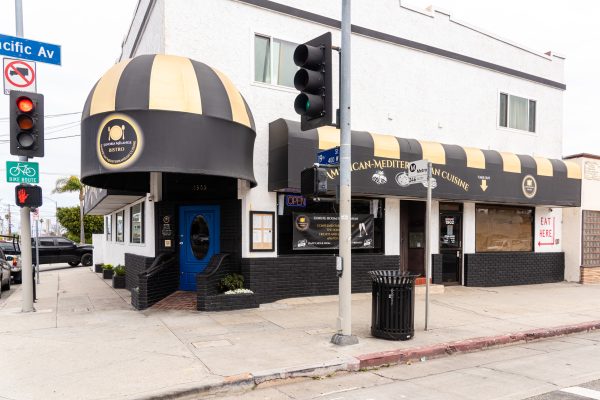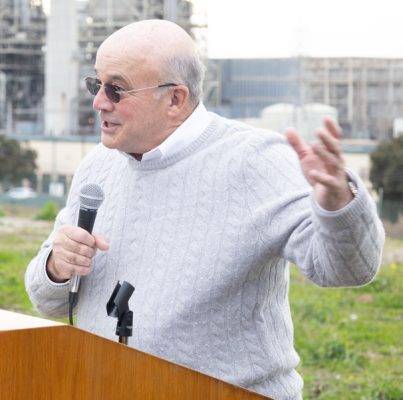
Two school bond measures, one primarily to improve elementary school facilities and another to upgrade the aging high school gym, will confront Manhattan Beach voters at the polls this November.
Measure C would dedicate $114 million to campus safety, fencing and seismic upgrades, while Measure EE would appropriate $39 million to revitalize historic Fisher Gym, turning the 1951 Mira Costa High structure into a state-of-the-art “athletics education complex.”
The two bond measures come after a review of school facilities several years ago revealed significant needs in the district. Dr. Michael Matthews, superintendent of the Manhattan Beach Unified School District, said that the proposed bonds do not address every aspect of the long-range facilities master plan, but represent important, immediate needs.
“We looked at what we can bite off at one time,” Matthews said. “We believe this is consistent with what we are hearing.”
District elementary schools were last worked on as the result of a 1995 bond measure. But while that construction made improvements, it did not create brand-new campuses.
“That essentially extended the lives of those campuses,” said Leasa Ireland, a member of the committee supporting the two bonds. “These are really old buildings. Some of them date to 70 years ago. There’s only so much you can do.”
A portion of the funds will be set aside for enhanced campus security, include additional fencing. Matthews said that the safety improvements were unrelated to a series of bomb threats that rocked Mira Costa last year, forcing multiple school closures. The plans were in place, he said, long before the calls came in.
“I do believe the bomb scares may have exacerbated things, but it’s been on our mind for decades,” Matthews said.
The funds would go to every elementary school campus, and would also help expand facilities for the music program at Manhattan Beach Middle School. Some schools would get more attention than others. Grandview Elementary, for example, has seen a dramatic campus population expansion since the last renovation. It took over the once-shuttered Ladera Elementary campus to its east, and under the proposal will receive earthquake retrofitting.
None of the campuses are expected to close during construction, Matthews said.
Among other priorities will be air conditioning. A heat wave in September of last year created problems for district classrooms. Teachers were compelled to give students frequent water breaks.
“There are just some systems that need work,” Matthews said. “Half of the classrooms are not air-conditioned.”

Measure EE would transform the gymnasium, locker rooms and surrounding facilities at Fisher Gym. Ireland noted that the transformation would have benefits for the broader community, not just students at the high school.
“Our community really does use that space. Manhattan Beach Youth Basketball, volleyball, and senior classes are all there,” she said. “Preliminary concepts have it giving us six times more usable space. That gives us the space to better serve those community leagues.”
Passage of the two bonds would not exhaust the district’s bonding capacity. MBUSD currently has a school district property assessment rate of $70.5 per $100,000 of assessed value. That’s higher than neighboring Hermosa, but lower than Redondo and El Segundo. If both measures were approved, they would raise the assessment rate by about $30.
No formal opposition to the bond measure language has been filed, yet.
The decision to split the construction effort into two measures was born out of a desire to make it easier for voters to see exactly what the bonds are paying for, Matthews said.
It is also likely to enhance each bonds’ chance of passing. Although state law gives districts some latitude with bond measure funds, large numbers and fuzzy language can turn off tax-averse voters.
Board members approved the two-bond approach at a July board meeting. Among the speakers that night was Larry Tramutola, president of Tramutola Strategists, a prominent California political consulting firm. The district hired Tramutola in December to determine the feasibility of passing a school facilities bond, which under California law requires support from 55 percent of voters to pass.
At the meeting, Tramutola said the decision to split the measures required more exacting ballot language for each measure. Board members spent time parsing the words “gym” and “activity center” before settling on “athletics education complex.” But he hailed the decision to split the measures, saying it set the district apart.
“I think the separation of these two provides transparency that most districts don’t do,” he said.
Note: A previous version of this article incorrectly stated that the bond measures are slated for the election next March. In fact, they will be on the ballot in November of this year.









